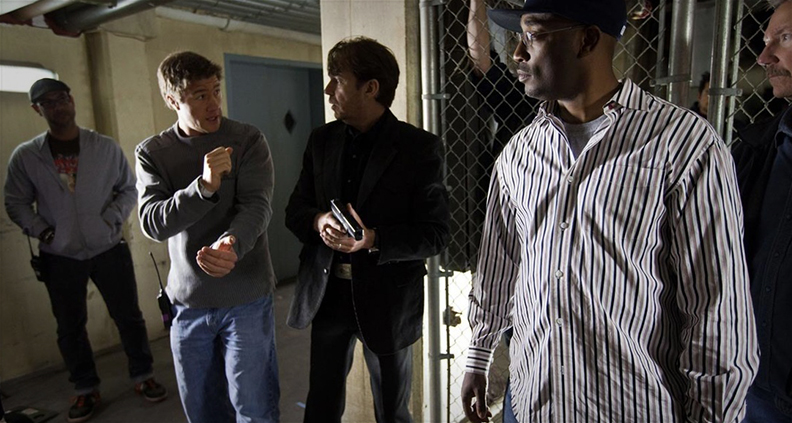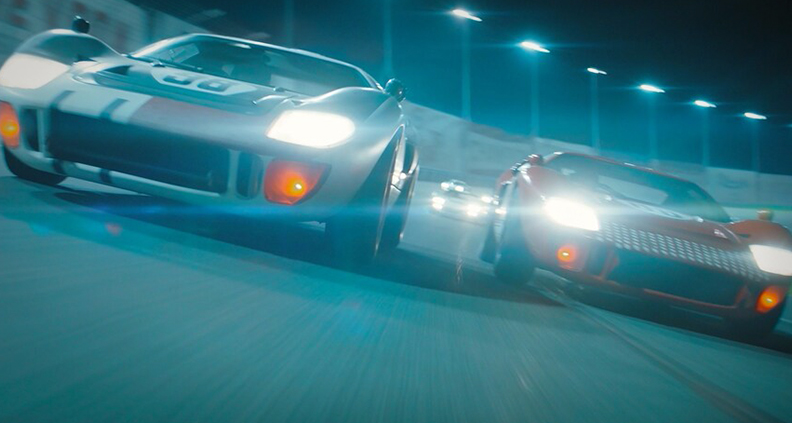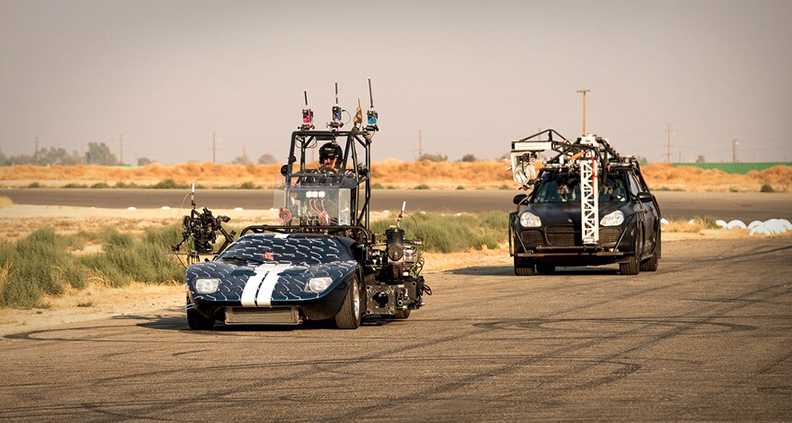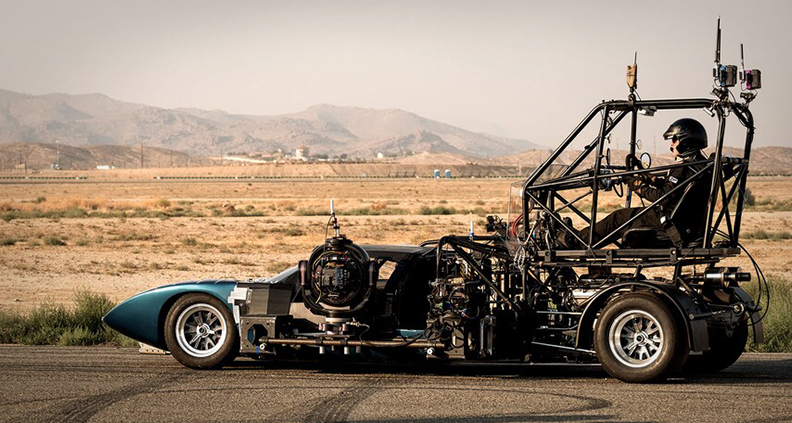Detail Oriented: ‘Ford v. Ferrari’ Second Unit Director Darrin Prescott Keep it In-Camera
Movies are a mosaic of moving parts. But we don’t always see which parts, or who’s moving them. In Detail Oriented, Su Fang Tham explores some of the more specialized areas—and career paths—related to film production.
***
In just over three months of wide release, 20th Century Fox’s award season contender Ford v. Ferrari has amassed $217M in worldwide box office, a testament to the fact-based sports drama’s audience appeal beyond hardcore car enthusiasts and auto racing fans. Nabbing four Oscar nominations earlier this month, the James Mangold directed film owes much of its kinetic racing sequences to the immaculate choreography by Second Unit Director Darrin Prescott, which recently earned him and and his stunt ensemble a nomination at this year’s SAG Awards.
The stunt coordinator-turned-second-unit-director has worked on some of the most intense action films in recent movie history, including Black Panther, Baby Driver, the John Wick films and The Bourne Ultimatum—for which he won a SAG award for outstanding stunt ensemble.
Prescott—who also plays racing legend Bob Bondurant in the film—recently spoke with Film Independent about using action to propel visual storytelling, and why he prefers shooting in-camera whenever possible. Here’s the conversation:
DARRIN PRESCOTT

Ford vs. Ferrari was produced on a reasonably small budget for a picture of this scale—under $100 million—especially considering all the obstacles.
Prescott: Part of why it took a while to get made was they were trying to figure out how to do it all in-camera. Fortunately, we had [executive producer] Kevin Halloran, who somehow pulled the project together, got the funds and made it all happen.
I knew the film was onto something special when I really found myself responding to it, even though I’m not necessarily into cars or auto racing.
Prescott: I’m really glad to hear you say that. The demographics of Ferrari is much broader than car enthusiasts and racing fans. Jim’s mantra was always: we’re not doing a racecar film; we’re making a drama that has racing in it. For him, the story and characters are at the forefront. And as an action director that really appealed to me, because I’m a big fan of making the action fit the story, rather than showing a bunch of action for action’s sake. We wanted to support the story with the action, rather than overwhelming it with racing sequences.
I read that you were pretty stoked when you heard Mangold’s team intended to build 34 replicas of the original cars from that era.
Prescott: When I heard they were actually going to build the cars, I was all in. That level of commitment for a film like this is incredibly rare nowadays. I always prefer to do as much in-camera work as possible.

Are the cars actually made to racing standards or were they intended only for filming?
Prescott: No, these aren’t race cars. We’re asking 1960s GT-40 and Ferrari PT-30 replicas to do things that cars don’t normally do—cars don’t want to drift turn, jump, smash or go 150 mph in the rain. Fortunately, [Ford vs. Ferrari Stunt Coordinator] Robert Nagle has a racecar engineering background, so he worked with picture car coordinator Rick Collins to get these cars as close to race-able as possible. We had a very tight turnaround time for these cars to be delivered. There was a lot of R&D on the fly, but everybody was safe, and that’s the most important thing.
How does the choreography of a sequence change when the director wants to capture images in-camera vs relying on CG?
Prescott: I always prefer shooting everything in-camera, wherever possible. The work that I’m most proud of are the in-camera projects where we do things for real, whether it’s Ferrari, the Wick films or Baby Driver. It makes my job more challenging—I don’t have the get-out-of-jail free card of the VFX team fixing whatever I can’t deliver on film. It requires more trust and open communication between the director and second unit to arrive at the best possible solution. But I enjoy the challenge of getting it all in-camera and making it as exciting as possible.

Did you use Previz to plan out all the racing scenes? If so, how closely do you adhere to it?
Prescott: It’s a loose guideline, no different from storyboarding. It’s a nice medium to make sure that I’m on the same page as the main unit director. On some projects, you may have to follow Previz shot-for-shot. I’m not a big fan of that, because it takes away some of the creativity. Jim didn’t want that—he gave me the freedom to choose whatever was best on the day of the shoot. His focus on every shot was: what’s the story that we’re trying to tell with this shot? For example, when we got so close to the hay bales with Ken on the track, it’s to show what a skilled driver he is. There are no gratuitous shots. But [Previz] was a great tool to keep track of the final Le Mans sequence. Since it’s a 24-hour race that takes place all over the countryside, we had to make sure we weren’t featuring too much of any one part of the track.
I read that part of Mangold’s approach was to stick to the film techniques of the era. How did this impact how you had to shoot and choreograph these sequences? For example, you weren’t able to use drone photography.
Prescott: Not using current filming techniques ruled out a lot of the things we now use to film car chases to make them thrilling—so that was challenging. But I live for those films that want to do things in-camera, so I loved the challenge! We had to limit camera moves to what is believable for that era. For example, normally we would take the arm and do a big swooping move to enhance the illusion of speed, but we couldn’t do that, because it would look too much like a car commercial. Instead, we put the Russian arm super low to the ground, have the cars crowd the lens and fill up the frame, which made the cars look great on film.

How did you get all those close-ups at insane speeds?
Prescott: A lot of that was done by the main unit. Fortunately, both Matt Damon and Christian Bale are very good drivers and could do a lot of their own driving. The smallest car is the “pod car,” i.e. the hero car with the stuntman driving it on the roof so that we can film the entire car wheels down touching the pavement. That allows the actor to interact with the other actors without worrying about controlling the car. It also allows us to drive in closer proximity, because everyone driving is a trained stunt guy. Then we have the “biscuit” rig: a car mounted on a high-performance platform with multiple cameras. We use this if you need to get more coverage in an extended dialogue scene, or need more control in lighting and sound. When we worked on The Bourne Supremacy, we had a “biscuit”—Matt was the first actor to ride in it. After we blasted him down a tunnel in Berlin, he came back and said, “This is called the no-acting required vehicle.” When you’re in it, you’re really in the car chase. To give the audience the visceral feel, the best thing is to put your actor in the car and in the environment.
As the Second Unit director, do you oversee all the stunt driving or racing sequences? How do you delineate between which ones fall under main unit vs. your team?
Prescott: It can be a little hard to draw the line. Second Unit does all the exterior action and high-speed sequences, but anytime you see Matt or Christian in the racing scenes, the main unit generally does it.
What was your proudest sequence to shoot on this project?
Prescott: The final Le Mans race—we had to make one track out of 4 different locations for that sequence. Since it’s a 24-hour race, we needed to distinguish between nighttime vs. daytime, and account for the rain and all the elements. I was concerned with sustaining the momentum while still portraying the passage of time to depict the 24-hour race. The logistics was very challenging. But when I saw director’s cut with Jim, I thought it worked really well.
If you’ve missed the film in theaters, don’t fret: Ford v. Ferrari will be available on streaming platforms on January 28, with 4K Ultra HD, Blu-ray and DVD out on February 11. And to learn more about Darrin Prescott, just click here.